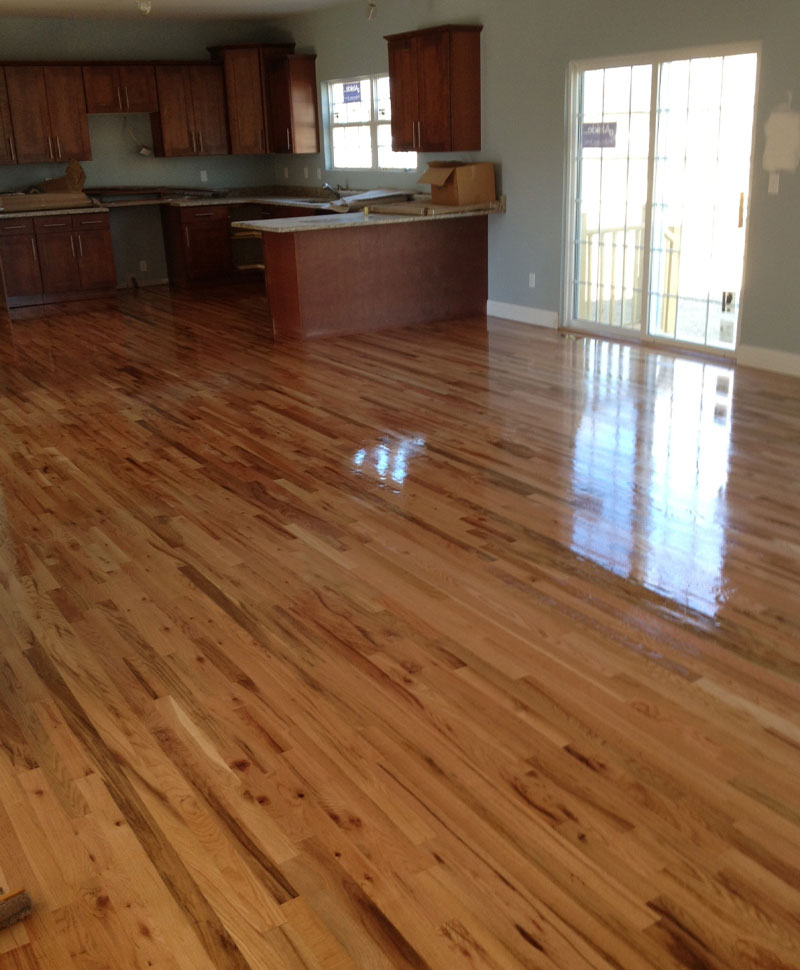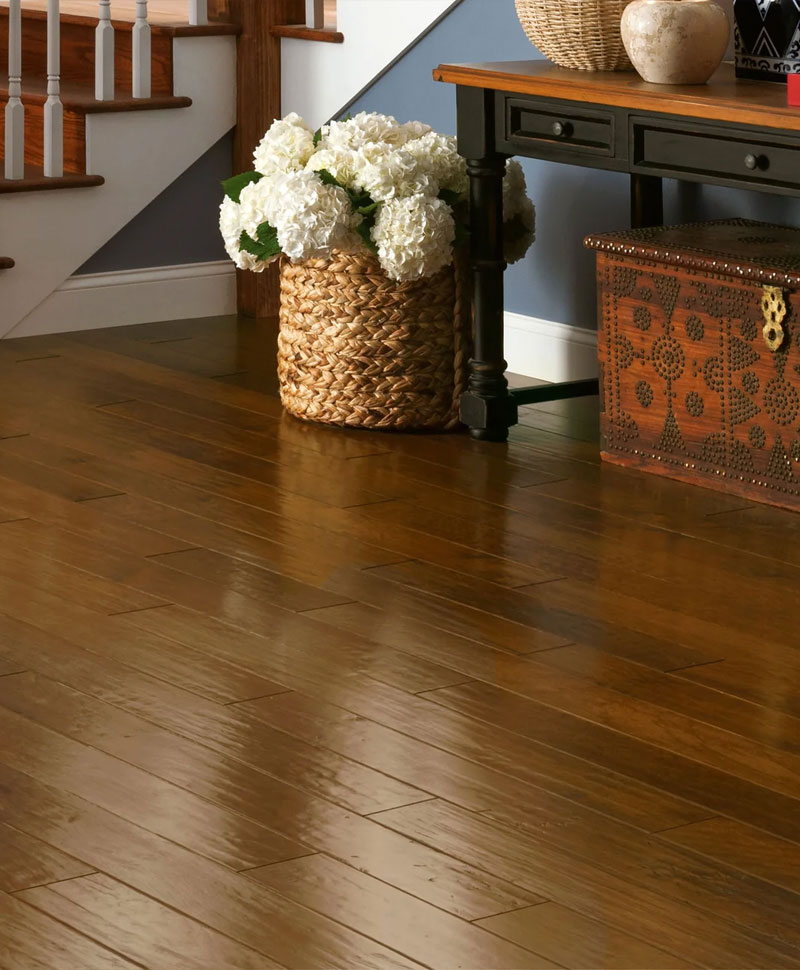Floor Finishes and Curing
At TipTop Flooring, we’re often asked for a recommendation on the best finish for your floors. There’s no best answer to that question. The best floor finish for you depends on your preferences, your lifestyle and your budget.
The term curing has a special meaning related to floor finishes. It refers to the process of reaching full hardness after the finish is applied to the floor. The time for a particular finish to cure depends on the nature of the finish as well as the specific situation where the floor is located.
Because there are many factors that interact with each other, choosing the best finish for you is one of the most complex areas in flooring and one where mistakes can be costly. Here are some of the most important things you should know.
There are two basic kinds of floor finishes. Lacquer finishes include a variety of Urethanes including Bona (or Swedish) finishes. Oil finishes are usually a combination of highly modified natural oils with additives to improve hardness and drying of the wood.
If you live in the Greater Toronto Area (GTA) one of our Flooring Consultants will be happy to help you make a wise decision. Here’s a short list of things you should tell your consultant.
- Where will your flooring be installed?
- What kind of furniture will be placed on the floor?
- What kind of pets do you have?
- What kind of decor will the flooring be part of?
- How important is a “natural wood” appearance?
- How important is ease of maintenance?
- In general, what do you expect your flooring to cost?
Urethane Finishes For Your Wood Floor
Urethane is the term for a group of chemicals that are used in a variety of applications to add strength, wear and abrasion resistance to a variety of products.
Urethane finishes are a good choice for high-traffic areas. They will work where there is a high probability of spills.
Urethanes finishes have a long life, but some yellow with age, especially if they’re exposed to direct sunlight. In sunny rooms, a finish that contains an ultraviolet inhibitor will last longer.
There are several different kinds of urethane finishes for wood floors. Here’s a quick review.
Water-based urethane finishes are usually combinations of urethane and acrylic. In general, the higher the percentage of urethane, the more expensive and durable the coating will be. Water-based finishes do little to change the color of the wood.
Water-based urethane finishes are clear. They don’t yellow and are available in different shine levels. They also have a milder odor than oil-modified finishes and dry more quickly. Overall, water-based urethanes are considered the most popular finishes with homeowners.
Oil-modified urethane finishes are fast drying but slow to cure and require buffing between coats. Oil-modified urethane also has a high VOC level, although not as high as other products. Oil-modified urethane will give you a moisture-resistant finish, though it takes about eight hours to dry. Oil-modified urethanes are available in glossy and satin finishes.
Moisture-cured urethane finishes create the most wear-resistant surface which is why they’re popular for commercial buildings. They are also extremely flammable, difficult to apply because relative humidity affects the process. They also contain high levels of VOCs. Moisture-cured urethane finishes should only be applied by professionals.

Another finish that should only be applied by professionals goes by the names “Swedish” or “Bona” finish. These finishes are low VOC and are generally more expensive, but they have a reputation for durability, transparency and elasticity. The fast curing rate minimizes downtime, meaning that you can use the floor sooner. Bona finishing is colorless, which highlights the true color of stained or natural wood floors.
The biggest disadvantage of a lacquered finish on a wooden floor is that it ‘sits’ on the floor. A sharp object or long-term abrasion can wear away the surface. When that happens it doesn’t protect the wood any longer. The wood may look grey in spite of maintenance efforts and some “cleaning” efforts can actually make things worse.

Oil Finishes For Your Hardwood Floor
Today’s state-of-the-art finishes combine natural oils and chemical additives help the finish dry faster and leave a harder surface. There are oil finishes available that do not include any VOCs.
If you want the most natural looking wood floor, an oil finish is your best choice. Because the oil actually penetrates the floor and then hardens, oil finishes won’t show small scratches or dings the way a floor with a urethane finish will.
Other finishes only allow the floor to breath in the areas along the edge. But the natural oil finish lets the entire floor breathe. That means an oil finished floor may never need to be sanded, if it’s properly cared for.
If you live in the Greater Toronto Area (GTA) one of our Flooring Consultants will be happy to help you make a wise decision about oil flooring finishes.
The floors in your home or office can look better
We don’t need to convince you – our work speaks for itself. Call us today for a free consultation and quote!
